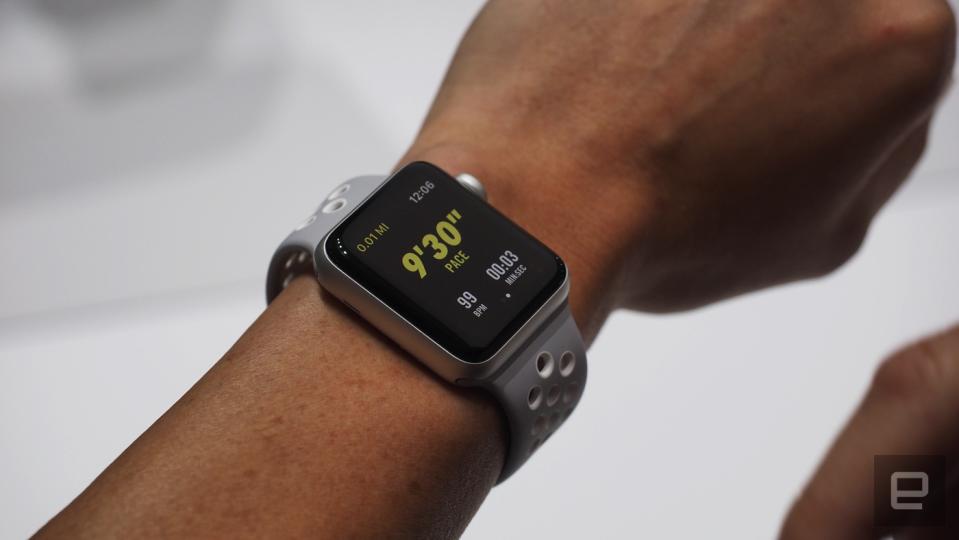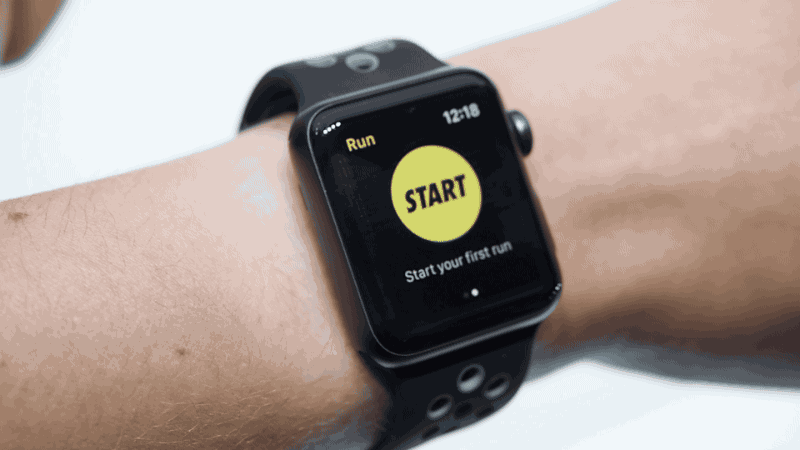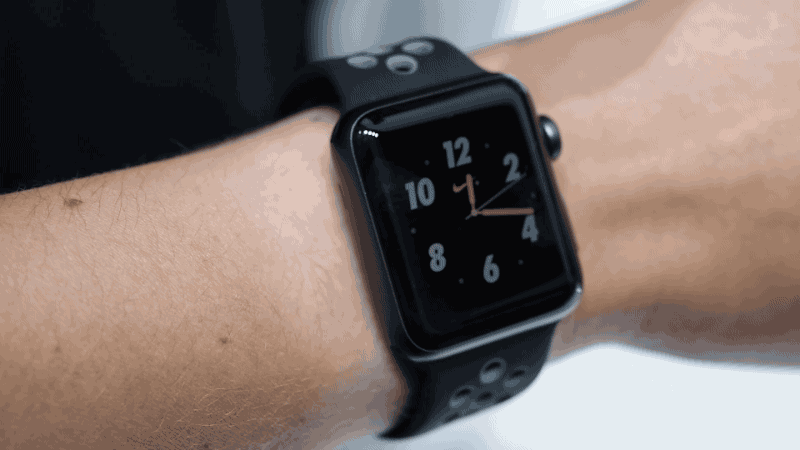The Apple Watch Nike+ is a running watch I might actually use
It helps that it can actually track distance accurately.

I've been wearing the original Apple Watch every day for the past eight months, but never as a running watch. As much as I enjoy the device for its notifications, slick Activity app and stylish design, I would never, ever trust it on a training run. My hangup, and many runners' hangup, has been the lack of a GPS radio. Without that crucial bit of technology, the distance tracking is off -- and no, running with your iPhone on your person to triangulate your location isn't the same.
Needless to say, if your distance tracking is inaccurate, your average pace will be inaccurate, and to a runner, even a casual one, that is bad news indeed. So until now, I've been sticking with my trusty Garmin Forerunner watch, even as I continue to use the Apple Watch for everyday step-tracking. With the newest-gen Apple Watch, though, I might be willing to reconsider.
The new device, called the Series 2, has a built-in GPS radio that comes standard. But I'm particularly intrigued by a version the company developed with Nike, called the Apple Watch Nike+. In addition to looking like a Nike Watch — it's available in four sporty color combinations, all variations on black, gray, white and green — it comes loaded with Nike's own running app. As you might be aware, though Nike itself has dabbled in hardware, including the FuelBand fitness tracker and a dedicated running watch, Nike's real asset is its software — both its app and the community of runners that has grown up around it.
Upon closer inspection here at Apple's iPhone 7 launch event in San Francisco, I learned the watch features two faces, each of which has so-called complications that make it easy to start a run quickly. (Don't worry, you get all the other watch faces and features that come standard on the non-Nike Apple Watch.) Do that and the device will start tracking every stat a runner like me could hope for: pace, distance, calorie burn and heart rate. What I like, too, is that all of this information is displayed on a single screen, so that you don't have to swipe or press a button to cycle through them, which is what you have to do on many competing running watches, not to mention the original Apple Watch. That's especially impressive considering how small the display is: You'd think the UI would be cluttered, with all those stats crammed in, but they're easy to parse, even at a glance.

It helps as well that Nike's app design is just so slick. The whole "easily cramming lots of info onto one screen" thing is just one example. The black-and-gold color scheme is -- ugh, I hate this word -- sexy, and even after a quick demo here at the event, the app felt intuitive. It wouldn't take long for any of you to master it either.
Meanwhile, Nike's competition leaves a lot to be desired. Even Apple's own Workout app (on the current version of watchOS) involves a lot of taps to start a workout and further taps and swiping to either pause the workout or cycle through stats. (The new version of watchOS attempts to fix this.) You always had the choice of third-party running apps, but they obviously didn't come preloaded on the Watch, and even after you went through the trouble of adding them, third-party apps weren't always as fast or as capable on the Apple Watch. Garmin, though an expert in running hardware, has never had a memorable app, website or even watch interface. The fact that Nike's app is good-looking and easy to use counts for a lot.
The one feature that I really want, and that the Apple Watch Nike+ doesn't have, is interval training. I know many of you have heard me say this before, but I prefer run-walk intervals: They help me stave off injuries, and I actually achieve a faster overall time than I probably would otherwise. The Apple Watch still doesn't do that -- at least the Nike+ app doesn't -- but I remain hopeful that a software update could fix that. And besides, I realize I'm not just writing this assessment for myself -- I'm writing it for Engadget's readers, many of whom, presumably, are runners. No doubt most of you don't bother with walk intervals like your hobbling friend Dana, anyway.
As a watch (read: not just a piece of software), the Apple Watch feels, well, like an Apple Watch. Same size, same shape. The rubbery band is made of the same soft elastomer as Apple's other sport watches and is even slightly easier to fasten, in my humble opinion. If you're not into the sporty design, you could always get the non-Nike Apple Watch Series 2 and download the same Nike+ app. You just won't get the two exclusive Nike watch faces.
What I can't vouch for today -- and this is important -- is how accurate the GPS tracking is. That right there is a pretty big reason for me to withhold judgment. What if the biggest selling point turns out to fall short? I will indeed put this through its paces in a full review, but I do remain optimistic: I've never seen a GPS-enabled device whose distance tracking was terribly far off its rivals.
Heart-rate monitoring is another story -- quite the mixed bag there across different devices. We also don't know how long the battery life will be in real-world use.

The watch costs starts at $369 for the 38mm model while, the larger 42mm version will cost slightly more, at $399. (Those are the same starting prices as the non-Nike Series 2 watches.) You can order the Nike+ version starting this Friday, Sept. 9th, and it will ship in October -- just in time for me to test it in some cool fall weather.
Click here to catch all the latest news from Apple's "See You" event.






































